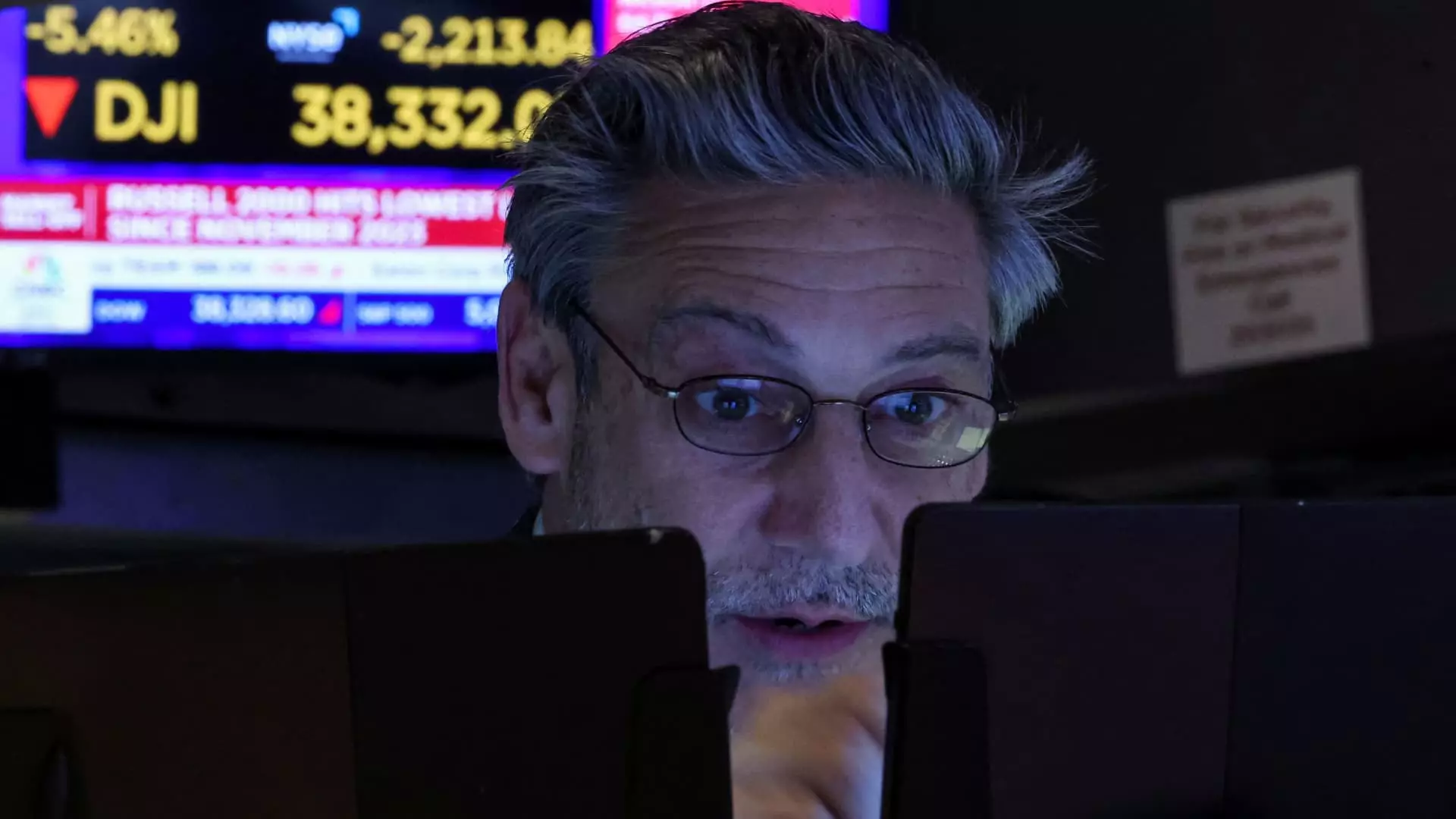The stock market, heralded as an epitome of economic strength, often exudes a sense of confidence, drawing investors with promises of growth and wealth. However, looming beneath its glossy surface are alarming indicators resembling the harbingers of disarray. The recent incident of market trading halts not only exemplifies this patterns but also puts forth a stark reminder of the fragile ecosystem that governs our financial well-being. While regulatory safeguards like trading halts are aimed at curbing precipitous declines and protecting investors, they also suggest an underlying unease that cannot be ignored.
Market volatility is not merely an anomaly; it is, unfortunately, becoming the norm. With spikes in global trade tensions, primarily instigated by tariff decisions of President Trump, investors are met with uncertainty, igniting fear and assertively triggering sell-offs. For those who operate at the intersection of economics and politics, this bears an unsettling resemblance to the tumultuous experiences witnessed during the onset of the COVID-19 pandemic in March 2020. Then, as now, unease led to drastic market responses that demanded intervention just to stabilize the chaos.
A Needle in a Haystack: The Role of Circuit Breakers
Trading halts kick in when stock price declines reach specific thresholds—a safety buffer designed to prevent rampant behavior fueled by panic. The technicalities surrounding circuit breakers are indeed complex: a 7% drop prompts a 15-minute trading pause, a 13% decline results in the same, while a catastrophic 20% plunge halts trading for the day. Yet, these mechanisms inadvertently act as a microcosm of our societal reliance on instant gratification; they provide an illusory sense of control over the uncontrollable waves of capitalism.
During periods of extreme fluctuation, the indices serve as a pulse check—one that often reveals not only economic trends but psychological reactions. The status of the S&P 500, which recently closed at 5,074.08, is a stark reminder of just how thin the line is between stability and chaos. As it skews perilously close to circuit breaker thresholds—4,718.89, 4,414.45, and so on—investors should be wary. This is not about numbers, but rather the human experience of anxiety that can ripple through an economy like a shockwave.
Panic Selling: A Psychological Phenomenon
The alarming chain reaction initiated by steep market declines is not just a simple reaction to numbers on a screen. It’s a psychological phenomenon deeply rooted in human behavior—fear and uncertainty breed a flight response that sends stock prices plunging. On a dreadful trading day, where the S&P 500 suffered an almost 6% drop, it does not merely reflect transactional losses but embodies a broader panic that cracks the foundation of consumer confidence.
As investors expressed their mistrust in the market, the Dow Jones and the Nasdaq faced similar fates, each reporting catastrophic declines. The figures are staggering: The former saw its largest one-day drop since mid-2020, while the latter is now in a bear market, registering more than a 20% decline from its peak. These are not statistical failures; they are the cries of an anxious populace responding to immense stressors—political turmoil, economic stagnation, and unpredictability.
Beyond Market Metrics: The Political Influence
What complicates this already volatile scenario is the political environment. The trade tensions and reactions from policy decisions have turned the markets into a chessboard where each move has dire potential consequences. Politicians wield tremendous power over economic outcomes, and the implications of their decisions resonate deeply with investors and consumers alike.
While one might argue for safeguarding measures such as tariffs for economic protectionism, the immediate turmoil it triggers reflects a misguided approach rather than an enlightened strategy. Protectionism may momentarily shield some sectors, but the overarching consequences lead to widespread uncertainty that spurs distrust and panic selling in the markets. Thus, we must ask ourselves: is the ostensible shield against foreign economies worth the volatility it creates within our own?
In navigating this tumultuous financial landscape, it is incumbent upon policymakers to foster an environment that prioritizes stability over reactionary measures. Ultimately, addressing the root causes of anxiety in our markets will require collaboration and insight into the true nature of capitalism—a resilient yet precarious system that thrives on consumer confidence.

